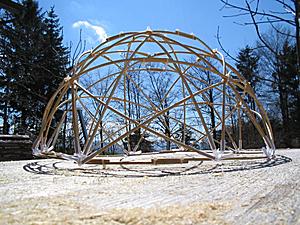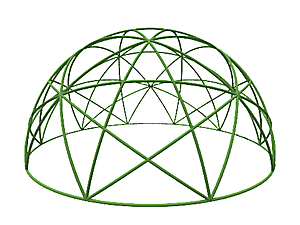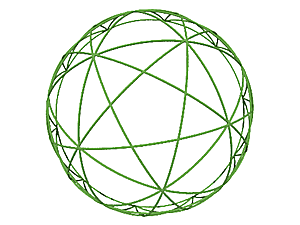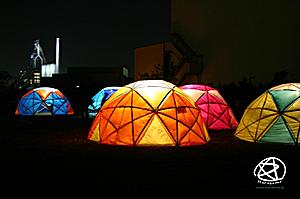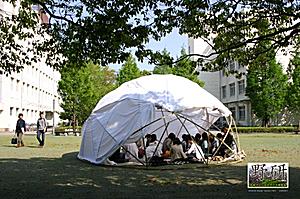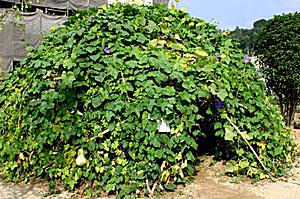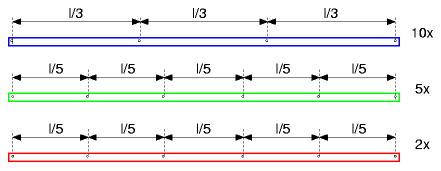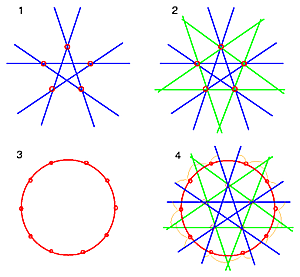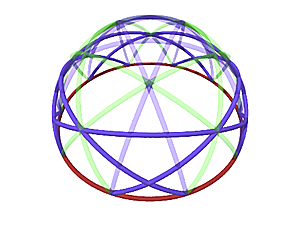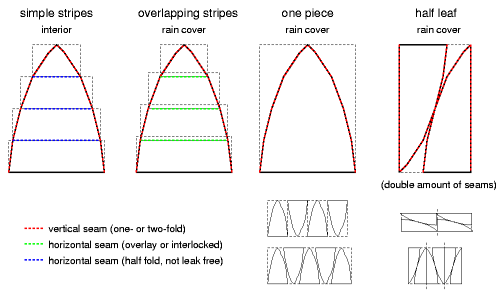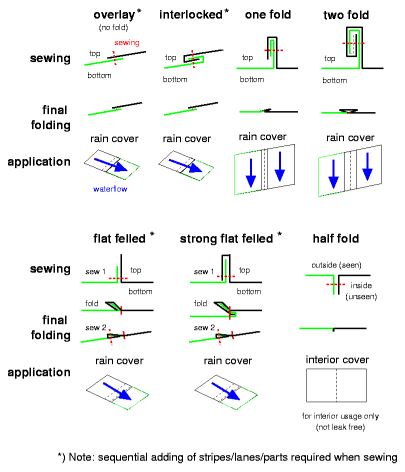
|
Star Domewritten by Rene K. Mueller, Copyright (c) 2006, last updated Mon, October 8, 2012
 website. a project of the Kyushu Fieldwork Society, in particular
Daisuke Takekawa (Ph.D.) Professor of the University of Kitakyushu, and decided to give a try. website. a project of the Kyushu Fieldwork Society, in particular
Daisuke Takekawa (Ph.D.) Professor of the University of Kitakyushu, and decided to give a try.
I did a small model, as I usually do when I explore a new form, and I'm very pleased so far, especially since the door can be done easily at the larger triangle at the base, and all bows are the same length, and the position of the junctions is simple to calculate.
The StructureAccording Star Dome , he developed it from a 2V geodesic dome, and finally used 3 bows from each bottom point of the 10 sided polygon. , he developed it from a 2V geodesic dome, and finally used 3 bows from each bottom point of the 10 sided polygon.
The main advantage over the 2V geodesic dome is apparent:
The Construction
This is a re-write of the construction procedure, if you want to follow the official procedure please check StarDome.jp: How To (English) As mentioned you need 15 full length bows, or 30 half length bows (tied to one long at a time), and drill a few holes to keep the bow crosses stable, or at least mark the crossings in case you plan to tie them:
Step by Step:
Optionally 5 bows of l/2 length can be used to cross over the top pentagon, and attached to the new formed pentagones around the side (not yet illustrated, but part of the original construction procedure mentioned above), it's suitable in case you plan no skylight.
The "original" star dome is made from split up bamboo, 10cm diameter and then split into 4 struts. Note: It's not sufficient to split it just once as the bamboo is too strong, must be twice splited (1/4th).
The Formulas
The Calculator
Sewing the CoverIn order to sew these leaf-like sphere surface together as rain cover, the water leak is particular to be avoided and so special care of how to sew the seams together:
In case of the star dome a combination of two of the options might be used:
Consider to seal the stitching holes from sewing with silicon or good clear tape for canvas (with threads) and preferable use water-resistant sewing thread as well.
Content:
|
| Home | · | About | · |  Tipi | · |  Yurt | · |  Dome | · | Features | · | Gallery |

Creative Commons (CC) BY-SA-NC 2005-2017, developed, designed and written by René K. Müller
Graphics & illustrations made with Inkscape, Tgif, Gimp, PovRay, GD.pm
Web-Site powered by FreeBSD & Debian/Linux - 100% Open Source

